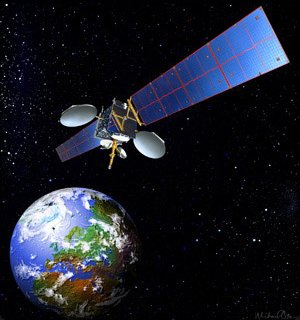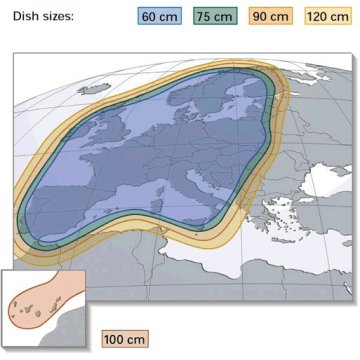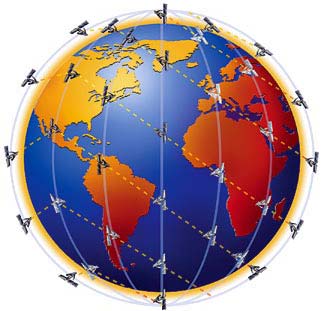Satellite Microwave
A communication satellite can be seen as a microwave repeater in space. It is equipped with a number of devices called transponders, each of which listens to some portion of the electromagnetic spectrum, amplifies an incoming signal (the uplink), and re-broadcasts it at another frequency (the downlink). Geostationary satellites are placed in orbit above the equator at a height and speed that enables them to maintain a position above a specific location on the earth’s surface. The antenna used to receive signals from these satellites can thus be mounted in a fixed position.

The Astra 1H geostationary satellite
The downlink signal can be relatively narrowly focused (a spot-beam), or may cover a substantial fraction of the earth’s surface. The area covered by the signal is called its footprint. The size of the satellite dish required to receive a signal from a satellite depends on its location within the footprint (see below).

The footprint for the Astra 1G and 1H geostationary satellites
Although signals travel between earth stations and satellites travel at the speed of light (circa 3x108 kilometres per second), the distances involved introduce substantial delays (typically 250-300 milliseconds). Satellites are also inherently broadcast media - very useful for some applications, but necessitating the use of encryption if security is an issue.
Low earth orbit (LEO) satellites are only visible for a short period. For this reason, large numbers of these satellites are required to implement a satellite communication system. When one satellite passes from view, another one replaces it. Satellite networks (or constellations) can provide worldwide telecommunication services using hand-held devices that communicate directly with the satellites.

Iridium is a constellation of 66 low earth orbit communication satellites
In the Iridium system, the satellites are positioned at a height of 750 kilometres in circular polar orbits, and are arranged in north-south necklaces, with one satellite every 32 degrees of latitude. Each satellite completes one orbit every 100 minutes, and six such necklaces are sufficient to provide coverage of the entire earth. The uplink and downlink frequencies used make it possible to communicate with a satellite using a small battery powered device equipped with an omni-directional antenna. Messages are received by one satellite and then relayed from one satellite to another around the world until the message can be transmitted to the destination mobile device (or via an Irridum gateway if the call is being routed via the public switched telephone network). The user simply requires line-of site between their antenna and one of the Iridium satellites.
